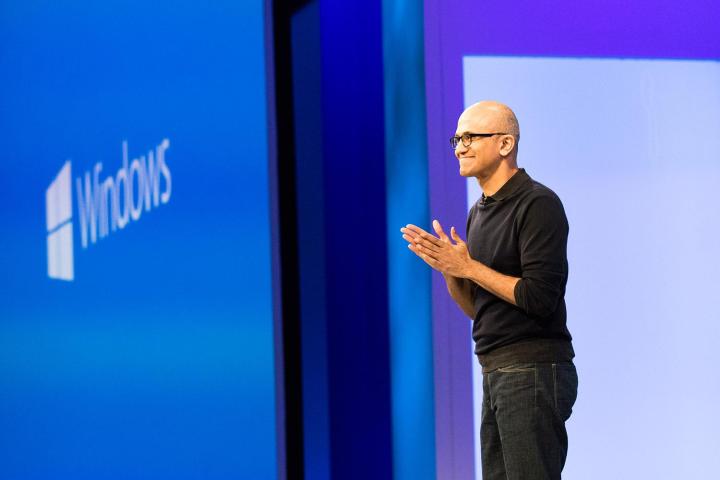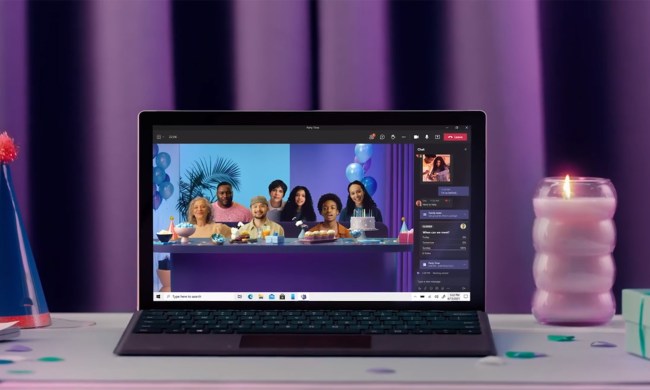
Yesterday I published a guide about what to expect at BUILD 2015. As it turned out, it was an excellent walkthrough of what Microsoft wouldn’t announce during its keynote presentation. The company left Windows 10 for last, spent only a fraction of its presentation on the new operating system, and didn’t announce any new hardware.
That was unexpected, but it says a lot about the company’s direction over the coming months: Microsoft is serious about building Windows into an extremely broad platform, even if it means temporarily brushing aside certain devices.
Where was the Surface Pro?
There was one missing announcement at BUILD 2015 that spoke as loudly as anything actually revealed; the new Surface Pro. Or lack of it.
The current model was revealed at BUILD 2014 on May 20, 2014, and released in June. This year’s conference would’ve been an obvious place to introduce a new model, but Microsoft uttered no hint of on or off-stage.
Microsoft failed to put a release date on Windows 10, which makes the rumored June-July debut look suspect.
That’s unexpected, because frankly, the Surface Pro 3 could use attention. It still uses the older 4th-generation Intel Core processors, which means it could provide better battery life and performance with a simple hardware upgrade. Such a refresh would’ve required no great effort, so it’s odd that it wasn’t announced.
Does this mean Microsoft is abandoning hardware, or is uncertain of its place in the company’s future? Almost certainly not. The Surface brand is just starting to gain a bit of traction. Timing is likely the issue. A new Surface Pro 4 with Windows 10 could be released as the best example of the company’s new operating system. The company also held back on announcing any new phones, and the same reasoning likely applies.
Coincidentally, the company failed to put a release date on Windows 10, which makes the rumored June-July debut look suspect. If that was the plan, why not announce it now?
Windows 10 takes a back seat
Microsoft’s keynote makes an early summer release look unlikely, as well. Why? There just wasn’t a lot to talk about – at least not in the realm of user-facing features.
Windows 10 is defined by three pillars; the new browser, which we now know will be called Edge, Cortana, and Universal apps. Aside from the new Start menu and desktop, which is just a reversion to features that Microsoft previously abandoned, these three features are what’s going to wow (or not) new users.

Yet Microsoft mostly ignored the first two at the keynote. Microsoft did reveal that Edge will support Chrome and Firefox extensions in some capacity, and we know Cortana will have a menu that looks a bit different than what’s in the current Insider build. Great.
But neither is anywhere near outstanding right now, in the latest Inside builds. Edge barely works, and Cortana isn’t useful for much beyond scheduling appointments and delivering pre-scripted jokes. It’s still not clear how either is going to improve the average user’s experience.
Universal apps, on the other hand, received plenty of love, and there was an interesting demo that showed how a Windows Phone could be used with a PC monitor using Continuum. In that demo, the phone was used as a smartphone while, at the same time, it drove universal apps on a PC monitor. That’s the kind of feature an average user might frequently use and appreciate.
Maybe there’s a lot more finished behind closed doors. The company is known to work on new builds of its operating system well in advance of pubic availability, as evidenced by the never-ending parade of preview build leaks. Still, this keynote was a chance for Microsoft to make clear that some of 10’s rough spots would be polished, and the company elected to spend its time elsewhere.
Not just for nerds
BUILD is for developers. Naturally the bulk of today’s keynote was devoted to them, and platforms that support them. Microsoft spent forever talking about how it can enable real-time scaling of cloud resources with Azure, highlighted expanded programming language support that will make Android and iOS applications easy to port to Windows, and made a big deal of its new, free, cross-platform Visual Studio Code software.
And that makes sense for a developer conference. But BUILD is also the company’s biggest yearly event, and sets the tone for the company’s efforts. Over the last few years it has led with Windows or Windows Phone announcements, and given its operating system center stage.

That’s not what happened this year. Not because BUILD is for developers, but because Windows as we knew it is no longer the company’s most important development platform. Windows is becoming a somewhat ambiguous entity that runs on many devices, accepts many forms of code, and is backed up by the Azure cloud platform.
Microsoft failed to highlight the Surface Pro 4, or a new Lumia phone, or even the Windows 10 release date, because it is changing. What we saw today is Microsoft’s post-PC vision: a world where the PC isn’t dead, but has instead become so capable that it no longer gels with the desktop or laptop most of us envision when we hear the term. It’s a shame that the company didn’t do more to highlight its upcoming consumer software and devices, but make no mistake – the decision to shift focus was not made from a position of weakness.


